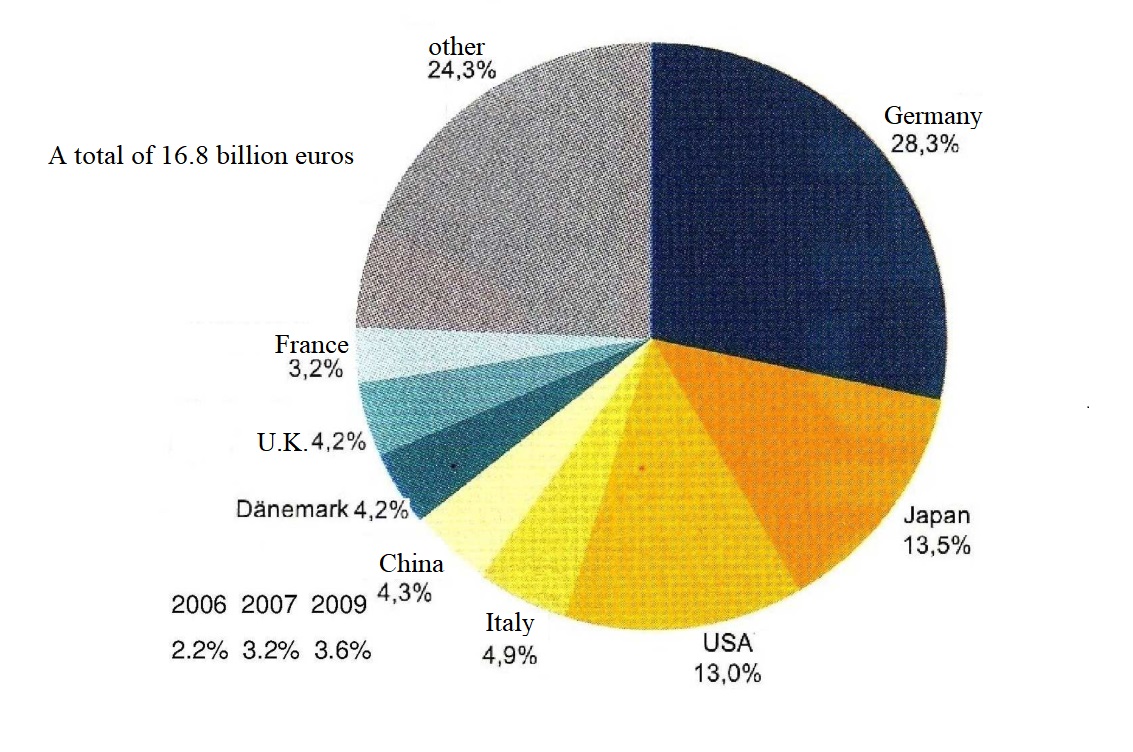As we all know, fluid power technology has a history of more than two thousand years and is a fairly mature technology. But innovation continues. At the Hannover Exhibition in 2011, many new products and technologies appeared in the field of hydraulics. This article introduces what the author has seen and heard, and is limited to the author's knowledge level, so I will miss everything. The order of precedence is also random and does not contain any meaning.
According to the latest statistical data released by the German VDMA (Machinery Equipment Association), according to the data released by 46 national statistical bureaus, Germany still ranks first among the important exporters of fluid technology products in 2010. The proportion of China's exported fluid technology products in the world market is also increasing year by year.

Germany's VDMA also counted the sources of imports of fluid technology components in the BRIC countries. The source of China's imports ranks first, but India ranks second, and Russia and Brazil can't even rank third. What's the reason? What does this mean?
According to the statistics of Germany's VDMA in March 2011, the total output value of the German hydraulic industry reached 3.8 billion euros (about 34 billion yuan) in 2010. Now the slogan of the German fluid industry is to improve the overall efficiency. Over the years, we have been striving to improve efficiency in various fields. But now we are more concerned about the integration and utilization of the benefits of all links in the entire industrial process: cost efficiency, process efficiency and resource efficiency. Only when the benefits of all aspects are considered at the same time, can the enterprise win in the international competition and occupy a place in the market for a long time. In terms of fluid technology, the first priority is energy efficiency and condition monitoring systems.
In order to reduce emissions, the European Union has proposed European standards TIER3 and 4, which force the engine operating speed to decrease and the maximum output power to decrease accordingly, which forces the hydraulic system to improve energy efficiency. The demand for condition monitoring systems (CMS-Condition Monitoring Systems) is also becoming more and more urgent, because only when the conditions of machines and equipment are accurately known can they be improved and the best economic benefits can be achieved. The on-line monitoring of the current status includes the most basic monitoring of the operating status of single components, such as hydraulic pumps and hydraulic motors, to the monitoring and optimization of the entire transmission chain like wind turbines. Condition monitoring, of course, is inseparable from sensors. Therefore, in recent years, the sensor industry has developed faster than the fluid industry.


